 Loading... Please wait...
Loading... Please wait...-
CALL US AT 632-8140854 or 0917-6731947
- My Account
- Items / $0.00
All prices are in All prices are in USD
Categories
What is Sustainable Agriculture
Categories
 |
We care. You care- enough that you wish your flowers do little or nothing to harm the environment or your health, enough that the workers who plant, grow and harvest your flowers are happy. That is why you purchase eco-friendly bouquets that are sustainably grown. We celebrate nature, everything that is beautiful, vibrant and healthy. |
What is Sustainable Agriculture?
Our goal is to tread lightly on the planet. We are mindful of the acts we do in our flower farm, knowing that each act of tilling, growing, harvesting and packaging, can do damage or save the planet. One of the most concrete steps we do this is through implementing sustainable agriculture. When we grow or harvest our flowers, we remove some nutrients from the soil. If we do not replenish these, the land suffers and we can no longer use the soil for farming. Sustainable agriculture means replenishing the soil while minimizing the use of non-renewable resources, such as natural gas or mineral ores. We engage in concrete steps to ensure that our farm produces flowers indefinitely, without causing irreversible damage to the health of an ecosystem. First, this entails redefining our practices and processes on the soil, to produce s flowers and foliage that are not only profitable but also healthy. Among others, we practice biodynamic agriculture. Biodynamic Agriculture was introduced in the 1920’s by an Austrian scientist and philosopher, Rudolf Steiner. This manner of farming takes a unified approach to agriculture by considering the interconnectedness of the soil, the plants, animals, the earth and even the entire cosmos as a living system. It is considered as one the most sustainable forms of agriculture. The focus of Biodynamic Agriculture is developing and maintaining a healthy soil organism through the use of composting, crop-rotation, cover-cropping and special preparations. The farm is considered as an entire living organism, with the farmer and his practices as playing a vital role to the farm ecosystem. Aside from redefining farming practices, we look at socio-economic factors, where we enhance the quality of life of our farm workers. Sustainably grown goes beyond organic, as organic refers only to specific chemical and pesticide free practices. Sustainability embraces a much broader perspective and deals not only with production but also in environmental and eco-system issues, and social matters such as the farm's workforce and community.
Sustainable Crop Production Utilizing Native Methods
We have been fortunate to work with and among Philippine indigenous tribes or natives. They have worked with us imparting the wisdom and heritage of their ancestors on flower farming. These include sustainable farming techniques that rely on natural methods handed down from generation to generation by the Talaandigs; the Higaonon; and Bukidnon farmers. Alongside their wealth of knowledge on natural methods, we have merged technology and science, to implement agricultural techniques that build our soil fertility, while protecting our air, water and wildlife. We have merged and developed a deeply rooted natural system of production, pest management, and weed and fungal control. Among these:
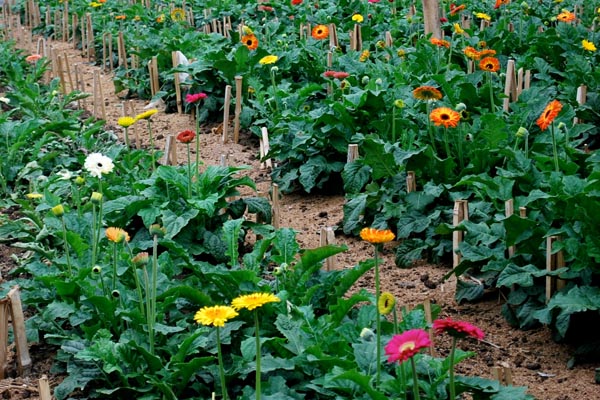 |
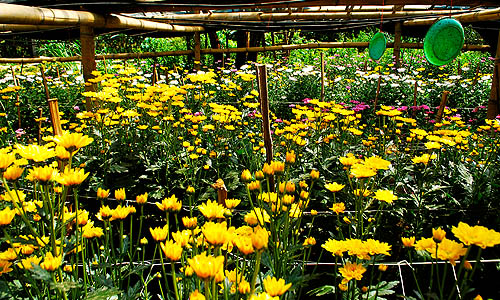 |
- We practice natural methods on cover cropping, composting, and crop rotation;
- Our main source of soil fertility is legume cover crops, which provide nitrogen, micro nutrients and organic matter. We use nitrogen-fixing and leguminous plants that are native to our farm, that form symbioses with nitrogen-fixing bacteria called rhizobia. These are plants that modern farming would have otherwise deemed as weeds. The natives have taught us to use these plants as a viable source of fertilizer. Also, the cover crops provide habitat for beneficial insects, keeping pests very low;
- Our farm prides itself with its practice of Integrative (Ecological) Pest Management to manage the insects and pests in the farm. We make use of beneficial insects such as lady bugs, lace wings and stingless wasps to rid our farm of aphids, mites, caterpillars, white flies and other insects.
- Aside from beneficial insects, we rely on other natural controls for soil-borne diseases and to ward off pests. Among these, we use natural insect traps, neem tree extract, milk, fish emulsion and beneficial bacteria and fungi to treat our soil;
- Among other practices, we use milk as fungicide. The phosphate in the milk boosts the plants immune system which helps fight fungi. Aside from controlling fungus, milk acts as a foliar fertilizer;
- We make use of fish scraps to create a fish emulsion, which we use as natural fertilizer. The emulsion is high in organic nitrogen, is a great soil conditioner, and provides bacterial food to feed the soil. Fish emulsion is sprayed on leaves and to drench the soil;
- We follow a biodynamic calendar for optimum times for sowing, harvesting and transplanting. Biodynamic agriculture follows daily, monthly and seasonal patterns of nature, such as the phases of the moon. We also use biodynamic preparations for our soil and leaves. These preparations are homeopathic substances made from herbs, minerals, plant and animal, at very miniscule portions; and
- We have learned to follow the cycles and phases of the moon in scheduling our pest management and control, taking into account that the life cycles of these creatures that coincide with the moon's phases.
These are some of the practices we embrace in our farm and adopt them in our daily tilling, growing or harvesting. By relying on the knowledge handed by those whom we believe are most in tune with nature and the earth, we build healthy and rich soils to produce flowers and plants that are healthy and thriving.
Resource Conservation and Energy Efficiency
Our Philippine Flower Farm encourages careful water use, energy saving initiatives, greenhouse gas emission reduction efforts and product packaging minimization.
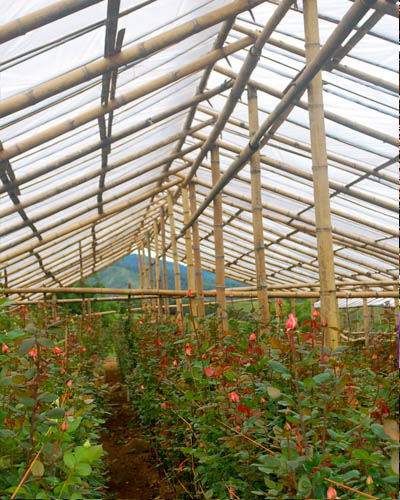
- Our farm’s infrastructure has been planned and built bearing in mind our carbon footprint. Our greenhouses are built using renewable resources or recycled material. Among these are bamboo, wooden pegs, stones, old tires, and similar materials;
- We have taken a unique approach and have constructed our greenhouses in bamboo. Bamboo captures carbon dioxide and stores it. Our greenhouses could then be seen as a carbon sink, storing the carbon in the bamboo poles. Our bamboo greenhouses are naturally designed and treated with natural elements to be weather, termite and mold resistant. The poles are treated with non-toxic borates to prevent termite and powder post beetle infestations as well as decaying fungi. Borates have been used internationally for the past 60 years as a safe and effective treatment to stop insects and decay. Our greenhouses do not even use nails or screws but are held together by bamboo pegs. We use stones and pebbles for our pathways;
- We have designed and positioned our greenhouses to ensure that we use the least amount of energy for our crops. Our bamboo buildings use natural ventilation, and rely on the direction, strength or gentleness of winds. With this, we eliminated the need for energy-powered fans;
- We rely on the forces of gravity for our irrigation, taking advantage of the gift of natural spring water, and use trickle- irrigation to conserve water and prevent erosion;
- Our irrigation systems do not use more water from the natural spring than is naturally replenished; and
- Our greenhouses are designed so we can harvest and utilize rainwater to irrigate our plants and treat our flowers.
Waste Management
- We wish to have minimal or zero waste on our farm and encourage composting and recycling of our agricultural and non-agricultural wastes;
- We recycle crop waste, weeds, twigs (almost everything!) and livestock manure for composting; and
- Packaging materials to send flowers to the Philippines nationwide are recycled and reused over time.
Protecting Ecosystems In and Around the Farm
Because of our efforts to use natural methods and products, and our minimal use of heavy equipment or machinery, we protect the ecosystems around the farm such as rivers and streams. Our farm is a happy and vibrant ecosystem, home to birds, toads, earthworms, snakes, bees and many more.
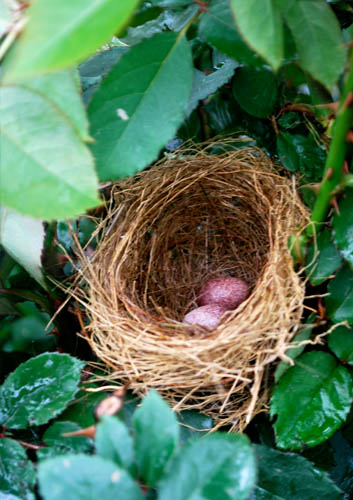 |
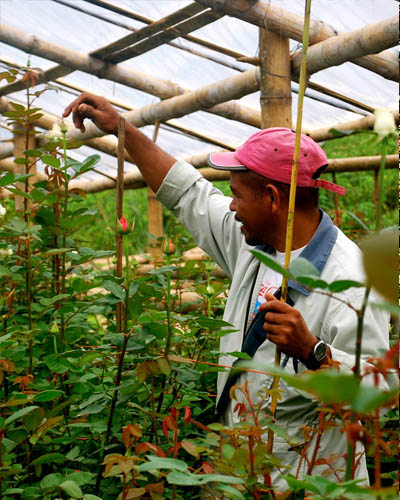 |
Biodynamic Vegetables
The farm has started to grow biodynamic vegetables. As in organic farming, there is no use of chemicals, pesticides or fungicides. However, biodynamics goes beyond organic farming. It treats the soil as a living organism and ensures the health of the soil at all times. Thus, biodynamic farming looks at the farm in terms of forces that affect the soil and the farm, processes that go into farming, rather than just the substances that are put into the soil or plants. Our flower farm has now a vegetable patch, devoted to plants that do not only adorn our tables but we can eat as well! The farm grows lettuces, arugula, baby carrots, cherry tomatoes, broccoli, cabbage, peppers, celery, alfalfa sprouts, spinach and several kinds of herbs.
More than this, we have planted the vegetables to create patches of ecosystems for all nature in our farm. We do so by growing in all our vegetable beds, a mix of legumes, leaf plants, root crops, annual and perennial plants in one bed. Thus, legumes will provide nitrogen (fertilizer) through their roots. Root crops, taking nutrients from the soil, help aerate the beds, benefitting all plants. Herbs and flowers serve as homes for beneficial insects and also repel the harmful ones.
Taking Care of our People
Every bundle harvested and every bouquet that is sent is the result of the dedication and diligence of a handful of farmers in Bukidnon, a number of them natives. They are led by Toto, a native from Bukidnon, whose passion for growing flowers is quite infectious. Our women team is led by Dadang, whose green thumb magically turns every plant green. Our farmers harvest the flowers at their peak freshness early in the morning. We try to get all the flowers in for processing before lunch. Early afternoon, our farmers are able to go home to tend their own farms or gardens, or play with their children. Our Farm prides itself in ensuring a safe, equitable and healthy work environment. We provide our farmers with access to the principal needs. Among these, we have trained and encourage our farmers to do backyard farming using biodynamic methods. There are now vegetable patches for farm workers to work on during their breaks. They could take the fresh produce home, put food on the table. The same patch will provide vegetables for the Steiner-inspired daycare we are building in the farm. We are in the process of creating Ulayan, a Waldorf-inspired daycare inside the farm, for the 3-6 year old children of our farm workers. Aside from these, we support our farmers and their local community through preferential hiring, purchasing and infrastructure improvements. We also follow a system of community problem solving.
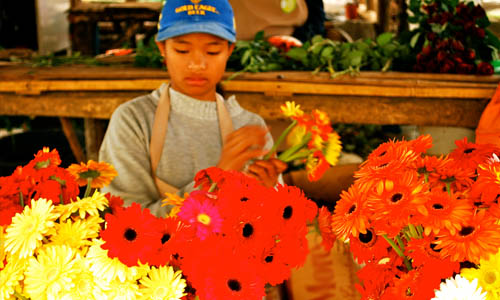
Each Flower Depot bouquet is hand selected, carefully arranged, and shipped fresh from our Philippine Flower Farm, with the dedication and commitment to sustainable farming. We hope to fully transition to become a certified organic and biodynamic agriculture in the future. The farm’s ultimate goal is to have healthy soil rich in organic matter, living soil that produces healthy plants. By ensuring the health of our soil and flowers, we ultimately protect our environment and also enhance the lives of our workers, as they are free from unhealthy and toxic pesticides.
Flower Depot Inc.
Read more about our sustainable & biodynamic farm practices: Flower Depot Blog





